
The Sagrada Familia, an iconic masterpiece designed by Antoni Gaudí, stands as a symbol of Barcelona's rich architectural heritage. With its intricate facades and breathtaking towers, this basilica captivates millions of visitors each year, drawing them into a world of artistic wonder and spiritual reflection.
In this article, we will delve into the fascinating history and unique elements of this UNESCO World Heritage Site. Exploring the Enchanting Sagrada Familia: A Must-Visit Landmark in Barcelona not only showcases Gaudí's genius but also offers an unforgettable experience for anyone eager to appreciate the beauty of this architectural gem.
Discover the Architectural Marvel of Sagrada Familia in Barcelona
The Sagrada Familia is not merely a church; it is a testament to architectural innovation that blends Gothic and Art Nouveau styles. Each facade tells a different story, showcasing intricate sculptures that reflect biblical narratives and the natural world. Visitors often find themselves enchanted by the elegance of the towers that reach for the sky, symbolizing the connection between earth and heaven.
One of the most remarkable aspects of the Sagrada Familia is its use of light and color. The interior features stunning stained glass windows that cast vibrant hues across the nave, creating a serene atmosphere of worship. The play of light enhances the spatial dynamics, drawing attention to the organic forms inspired by nature, making it a truly immersive experience for all who enter.
Additionally, the construction of the Sagrada Familia remains a work in progress, with completion expected in the coming years. This ongoing evolution allows visitors to witness the transformation of Gaudí's vision into reality. With each stone laid, the basilica reveals more of its intricate details and profound symbolism, making every visit a unique experience.
- Location: Carrer de Provença, 261-265, 08008 Barcelona, Spain
- Height: 172.5 meters upon completion, making it the tallest church in the world
- Expected Completion: 2026, marking the centenary of Gaudí's death
- UNESCO Status: World Heritage Site since 2005
A Deep Dive into the History and Significance of Sagrada Familia
The history of the Sagrada Familia is as intricate as its design, beginning in 1882 when construction first commenced under architect Francisco de Paula del Villar. However, in 1883, the visionary Antoni Gaudí took over the project, and his unique approach transformed the basilica into a symbol of Catalan modernism. Gaudí dedicated much of his life to this monumental work, infusing his passion for nature and spirituality into its architecture, which reflects the deep connection between faith and creativity.
One of the significant aspects of Sagrada Familia's significance lies in its architectural innovation. Gaudí's design incorporates a combination of Gothic and organic forms, which not only challenge conventional aesthetics but also enhance structural integrity. The basilica features unique elements such as hyperboloid structures and branching columns, which mimic trees, creating a sense of being enveloped by nature. This approach has profoundly influenced modern architecture and continues to inspire architects worldwide.
Moreover, the Sagrada Familia serves as a vital cultural and spiritual hub for both locals and tourists. Its construction is funded primarily through private donations and ticket sales, illustrating the community's commitment to preserving Gaudí's vision. As it nears completion, the basilica stands as a testament to the enduring power of creativity and human aspiration, attracting over 4.5 million visitors annually who come to witness its beauty and significance.
In conclusion, the Sagrada Familia is more than just an architectural wonder; it embodies a rich tapestry of history, culture, and faith. As it approaches its centennial completion in 2026, it will not only mark the legacy of Antoni Gaudí but also continue to be a beacon of inspiration for generations to come. Visitors can expect to be awed by its beauty, reflect on its meaning, and appreciate the ongoing journey of this remarkable project.
Exploring the Unique Design Elements of Gaudí's Sagrada Familia
One of the most striking design elements of Gaudí's Sagrada Familia is its use of organic shapes and forms. Inspired by nature, Gaudí incorporated structural elements that mimic tree branches, which not only serve an aesthetic purpose but also enhance the stability of the building. This unique approach creates a harmonious blend between architecture and the natural world, inviting visitors to experience a sense of tranquility and connection with the environment.
Another fascinating aspect of the Sagrada Familia is its intricate facade designs, which are meant to convey biblical stories and themes. Each facade—Nativity, Passion, and Glory—exhibits distinct artistic styles that reflect the narrative they portray. Highlights include:
- Nativity Facade: Celebrates the birth of Christ with elaborate sculptures and nature motifs.
- Passion Facade: Depicts the crucifixion with stark, angular forms that evoke a sense of suffering.
- Glory Facade: Represents the resurrection and eternal life, featuring grand arches and vibrant light.
The interior of the Sagrada Familia is equally mesmerizing, characterized by its innovative use of light. The stunning stained glass windows create a kaleidoscope of colors that change throughout the day, bathing the space in a divine glow. This intentional design showcases Gaudí's understanding of light as a transformative element, which enhances the spiritual experience for visitors.
In addition to its aesthetic brilliance, the basilica's engineering marvels set it apart from traditional structures. The use of catenary arches and hyperboloid structures allows for greater height and open spaces, redefining what is possible in sacred architecture. Gaudí's pioneering techniques not only contribute to the building's beauty but also establish a new paradigm for future architects to explore.
Tips for Visiting Sagrada Familia: What You Need to Know
When planning your visit to the Sagrada Familia, it's essential to book your tickets in advance. The basilica is one of the most popular attractions in Barcelona, and long queues can be expected, especially during peak tourist seasons. By purchasing your tickets online, you can save time and ensure a smoother entry into this architectural marvel.
Another useful tip is to choose the right time of day for your visit. Early mornings or late afternoons are often less crowded, allowing you to fully appreciate the intricate details of Gaudí's work. Additionally, visiting during these hours provides the best natural lighting for photography, enhancing the breathtaking views of both the interior and exterior of the basilica.
Don't forget to take part in a guided tour if possible. This can greatly enrich your experience as knowledgeable guides provide insights into the history and symbolism behind the architectural features. Hearing stories of Gaudí's vision can transform your visit from merely seeing a building to understanding its profound significance.
Lastly, be sure to set aside ample time to explore the surrounding area. The Sagrada Familia is located in a vibrant neighborhood filled with delightful shops, cafes, and parks. Enjoying the local culture after your visit can enhance your overall experience in Barcelona and create lasting memories.
The Cultural Impact of Sagrada Familia on Barcelona's Identity
The Sagrada Familia plays a pivotal role in shaping Barcelona's cultural identity, serving as a symbol of both architectural innovation and spiritual aspiration. This basilica, designed by the visionary Antoni Gaudí, transcends mere religious significance; it represents the aspirations of the Catalan people and their quest for a unique identity. As it rises against the skyline, the Sagrada Familia evokes a sense of pride and unity among locals, making it an emblematic landmark of Barcelona.
Furthermore, the Sagrada Familia fosters a rich cultural dialogue by attracting millions of visitors each year. Tourists from around the globe come to experience Gaudí’s genius, leading to a vibrant exchange of ideas and traditions. This interaction not only enriches the local economy but also enhances Barcelona's reputation as a cultural hub, positioning the city as a destination for art enthusiasts, historians, and spiritual seekers alike.
Additionally, the ongoing construction of the Sagrada Familia serves as a powerful metaphor for perseverance and creativity. As the basilica approaches its completion date in 2026, it symbolizes the enduring spirit of innovation that defines Barcelona. The collaborative efforts of artisans, architects, and community members reflect a shared commitment to preserving Gaudí’s vision while adapting to contemporary needs, ensuring that this monumental piece of architecture remains relevant for future generations.
In essence, the cultural impact of the Sagrada Familia extends beyond its walls; it weaves together narratives of faith, artistry, and community. By embodying the essence of Barcelona, the basilica stands not just as a tourist attraction, but as a living testament to the city's resilience and artistic heritage. Its presence in the heart of the city fosters a sense of belonging and inspires both locals and visitors to appreciate the intricate tapestry of culture that defines Barcelona.
Must-See Features Inside Sagrada Familia: A Visitor's Guide
As visitors step inside the Sagrada Familia, they are immediately drawn to the grand nave, which is designed to resemble a forest canopy. The towering columns, branching out like trees, create a sense of elevation that transports worshippers into a realm of spiritual tranquility. Each column is uniquely shaped, embodying the organic forms that Gaudí loved, making the interior a breathtaking testament to nature's beauty.
Another must-see feature is the stained glass windows, each crafted with meticulous care to tell stories of faith through color. The vibrant hues not only illuminate the space but also evoke deep emotional responses as they shift with the changing light throughout the day. Visitors are encouraged to spend time admiring the interplay of light and color, which enhances the overall spiritual atmosphere of the basilica.
Furthermore, the crypt is a significant area worth visiting. This quieter, more intimate part of the basilica houses the remains of Antoni Gaudí himself, allowing visitors to connect with the legacy of the architect. The crypt features stunning details that reflect Gaudí's commitment to integrating artistry with spirituality, making it a poignant stop on your journey through the Sagrada Familia.
To make the most of your visit, consider exploring some additional features, such as:
- The Passion Towers: Climb to the top for stunning panoramic views of Barcelona.
- The Nativity Facade: Marvel at the intricate sculptures that celebrate Christ's birth.
- Visitor Center: Learn about the history and ongoing construction of this architectural marvel.
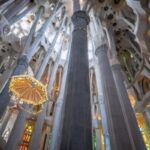 Unveiling the Majestic Interior of Sagrada Familia's Sacred Ironwork | Barcelona Travel Guide
Unveiling the Majestic Interior of Sagrada Familia's Sacred Ironwork | Barcelona Travel Guide Unveiling the Splendor: Sagrada Familia in Barcelona – All You Need to Know
Unveiling the Splendor: Sagrada Familia in Barcelona – All You Need to Know The Majestic Sagrada Familia: Exploring Barcelona's Architectural Marvel
The Majestic Sagrada Familia: Exploring Barcelona's Architectural MarvelIf you want to know other articles similar to Exploring the Enchanting Sagrada Familia: A Must-Visit Landmark in Barcelona you can visit the category WHERE YOU CAN GO.
Leave a Reply

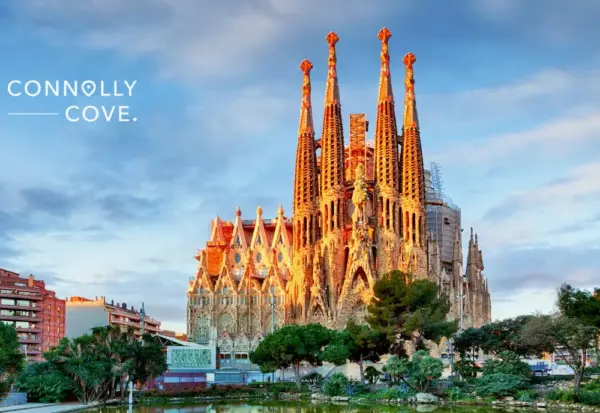
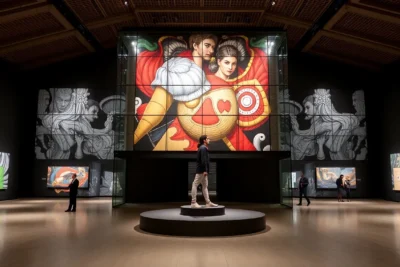
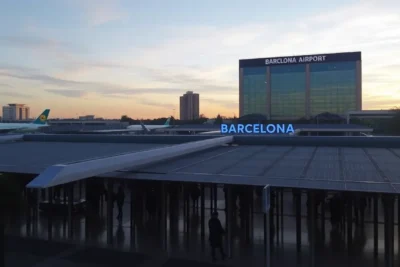

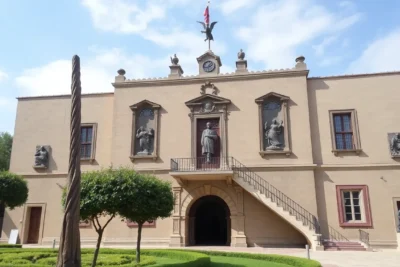

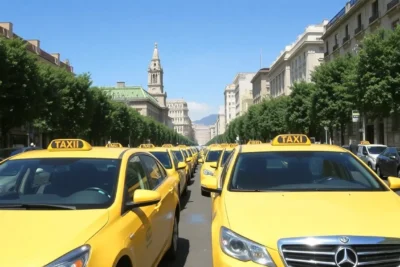
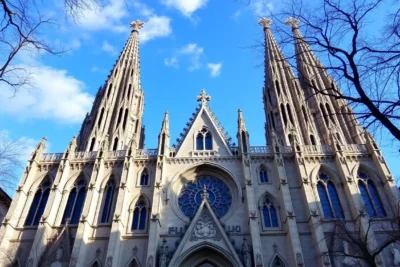

Read more!